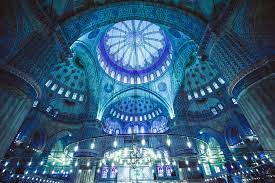Quick Guide 11: Blue Mosque or Sultan Ahmed Mosque?
Table of Contents
Is the interior of the Blue Mosque (Sultan Ahmed Mosque) covered with tiles?
Yes, the interior of the Blue Mosque (Sultan Ahmed Mosque) in Istanbul, Turkey, is adorned with thousands of beautiful blue tiles, which is why it is often referred to as the “Blue Mosque.”
Is this the reason that it is called Blue Mosque?
 Yes, the Blue Mosque (Sultan Ahmed Mosque) is called so because its interior is adorned with tens of thousands of blue tiles, which give it a distinct blue hue and contribute to its nickname.
Yes, the Blue Mosque (Sultan Ahmed Mosque) is called so because its interior is adorned with tens of thousands of blue tiles, which give it a distinct blue hue and contribute to its nickname.
A 19-year-old Sultan, Sultan Ahmed I, started digging ceremoniously in the presence of high officials until he was tired. Thus began the construction in 1609 that continued until it was finished in 1616. He appointed his royal chief architect Sedefkar Mehmed Aga, one of the apprentices of Architect Sinan, to be in charge of the construction. He designed one of the last examples of the classical period’s architectural style. It incorporates Byzantine architecture with that of traditional Islamic.
Built by Sultan Ahmed I as a part of a large complex, it is originally called as Sultan Ahmed Mosque. However, visitors fascinated with the beautiful turquoise blue tiles always remember it as the Blue Mosque. The complex consisted of a mosque, tombs, fountains, medreses (schools of theology), a health center, kitchens for the poor, shops, a bath, rental rooms, houses and store houses.
For more detailed information about the Blue Mosque, you can watch our video or join our signature tours.
For more about Serif Yenen and his tours, please visit www.serifyenen.com
